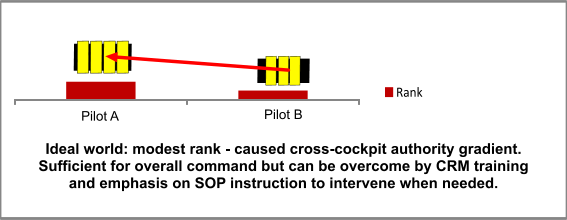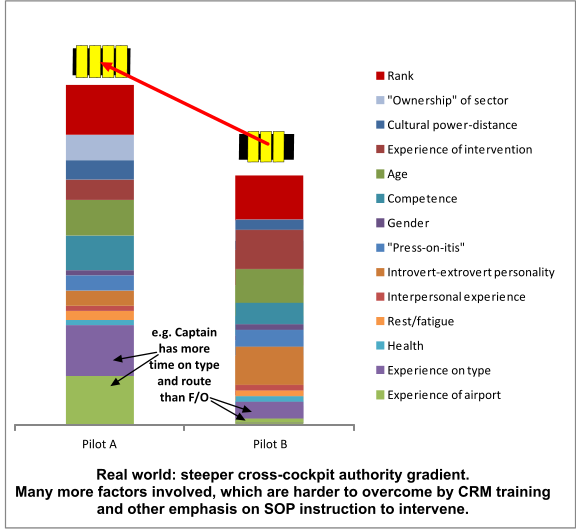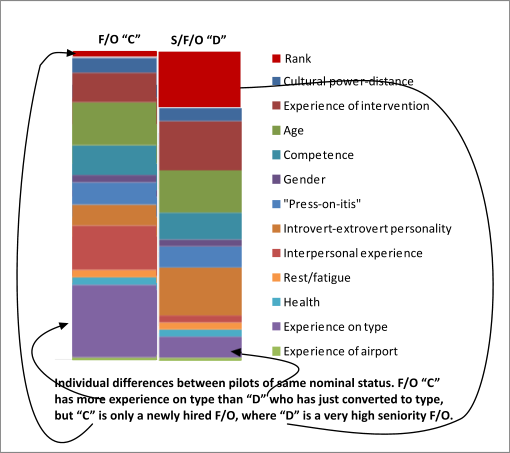Overcoming the authority gradient.
Several generations of CRM training have attempted to address the issues raised in the NTSB report. However, CRM training today may consist of as little as 2 days "classroom" work on a number of subjects. A typical approved scheme will "concentrate on crew members' attitudes and behaviour, and their impact on safety. It will provide an opportunity for individuals to examine their behaviour and make individual decisions on how to improve teamwork, within the aircraft and with outside agencies".
In the context of cockpit relationships, to put it at its most basic, CRM training emphasises that
- Captains should be receptive to F/O inputs, and
- F/Os should be assertive if they see dangers in what the Captain is doing.
In other words, it's about minimising inhibitions that occur because of the essential difference in rank. The hope is that once pilots have been exposed to the training, their behaviour will change. With an ideal, shallow CCAG, it's then only necessary to impose an additional obligation on the co-pilot to "intervene when necessary".

The real world.
Unfortunately, this is simply not realistic. Pilots are like all humans, full of variability, which has shown up time and again in accident reports. In almost all monitoring failure accidents in the past 20 years, both pilots had "passed" approved CRM training, but in the event a completely unsatisfactory authority gradient was still revealed. It has very occasionally been too shallow, but far more often too steep.
Many of these accidents have still involved the type of tactical decision/errors of omission that the NTSB considered particularly difficult to catch, especially for first officers. As they noted, "a first officer may have difficulty both in deciding that the captain has made a faulty decision, and in choosing the correct time to question the decision".
Many factors affect whether any given combination of pilots will react correctly to a developing hazardous situation. Given exactly the same set of physical circumstances, two pilots may well come to different conclusions as to whether it is "safe" or not. Factors affecting their ability to interpret available information include experience and skill level; ones affecting judgment will include fatigue and health; and ones affecting ability to make or respond to a challenge include cultural factors, inter-personal and social ones, and personality.

The next diagram illustrates typical characteristics are illustrated here symbolically as varying quantities that "stack up" to make two different individual First Officers' personalities, and will affect how and when they might intervene.

These two individual First Officers could end up with the same overall ability in terms of their ability to overcome the CCAG, but have totally different make-up. The specific combination will even be different for every pilot on every flight, as some factors such as health, fatigue and experience are flight-specific. The only thing that can be said with any degree of certainty is that in the real world circumstances of most accidents, the variable factors acted to INCREASE the CCAG, not reduce it.